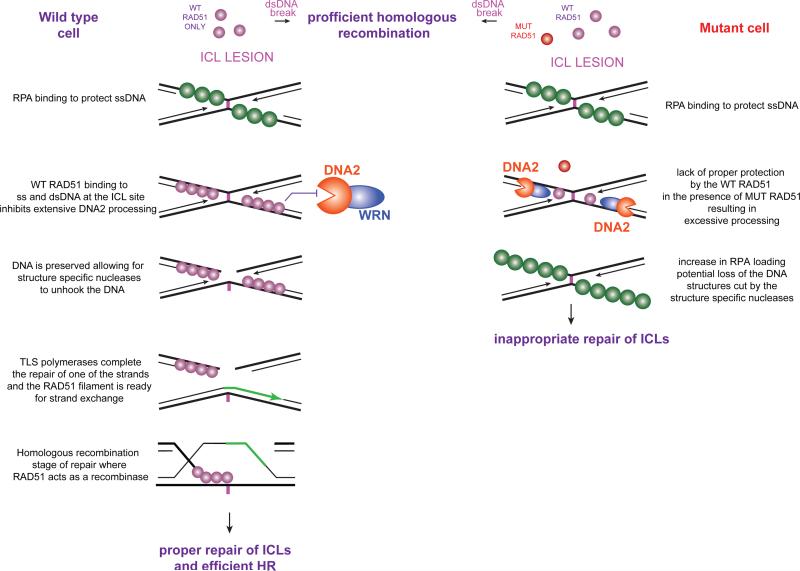Figure 7.
Proposed model for RAD51 function at the interstrand cross-link (ICL). Although our data are consistent with this model, it is possible that RAD51 has protective functions at other steps during ICL repair. (A) When only wild type RAD51 is present (shown in purple), it is fully capable of displacing RPA (shown in green) in the vicinity of ICL leading to protection of nascent strands from DNA2 and WRN mediated resection/unwinding and setting up proper downstream processing and repair. (B) When T131P RAD51 protein (shown in red) is present in the cell in addition to WT RAD51, less (or none) of the protective RAD51 is loaded at the ICL and DNA2 and WRN activities are not sufficiently inhibited. This situation would result in increased ssDNA and loss of DNA structures necessary for the downstream repair of the ICLs. Of note, the dominant negative effect of T131P RAD51 protein is less deleterious at a double stranded (ds) DNA break, where sufficient RAD51 filament is formed to support HR in vivo. In contrast, the protective function of RAD51 is interfered with in the presence of T131P RAD51 protein.

